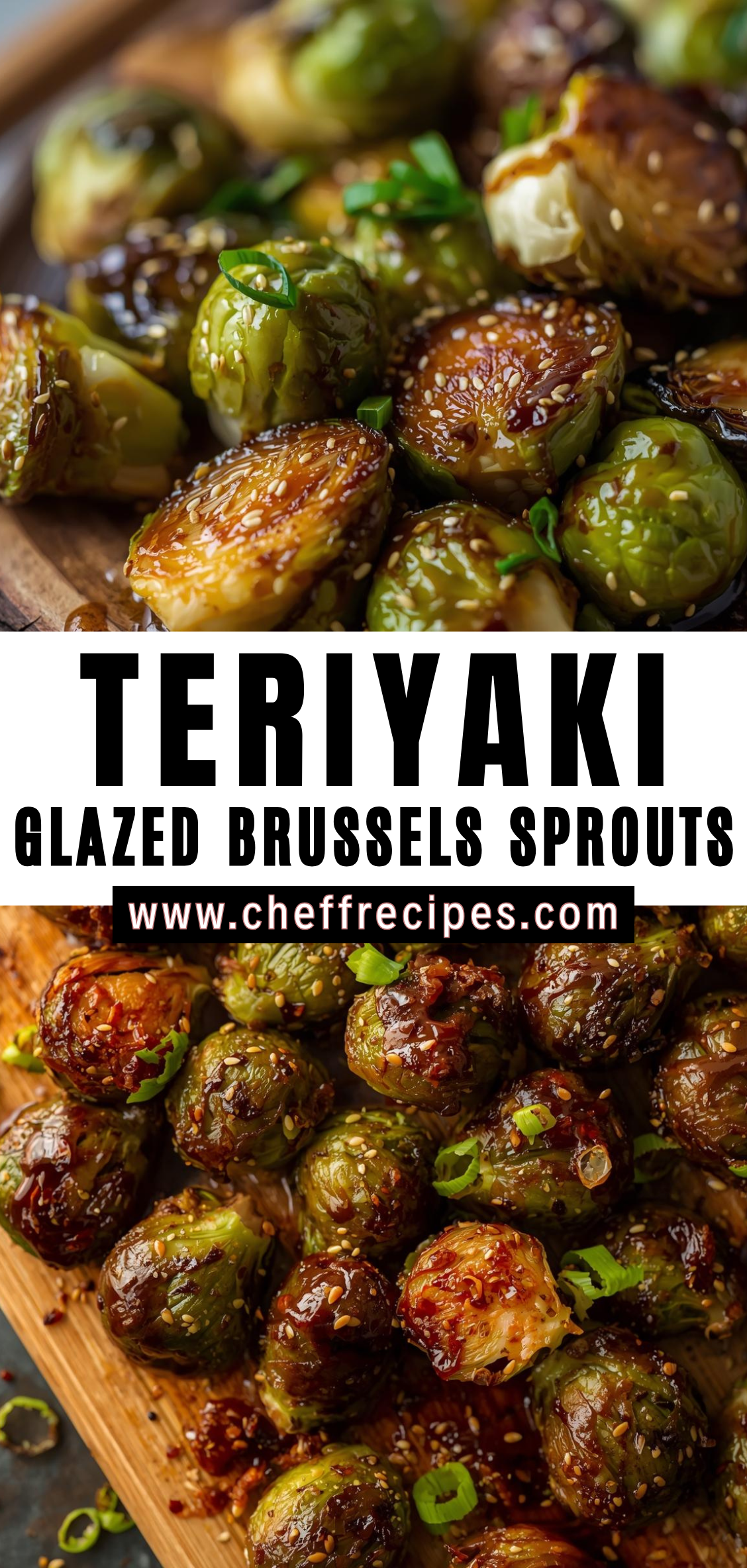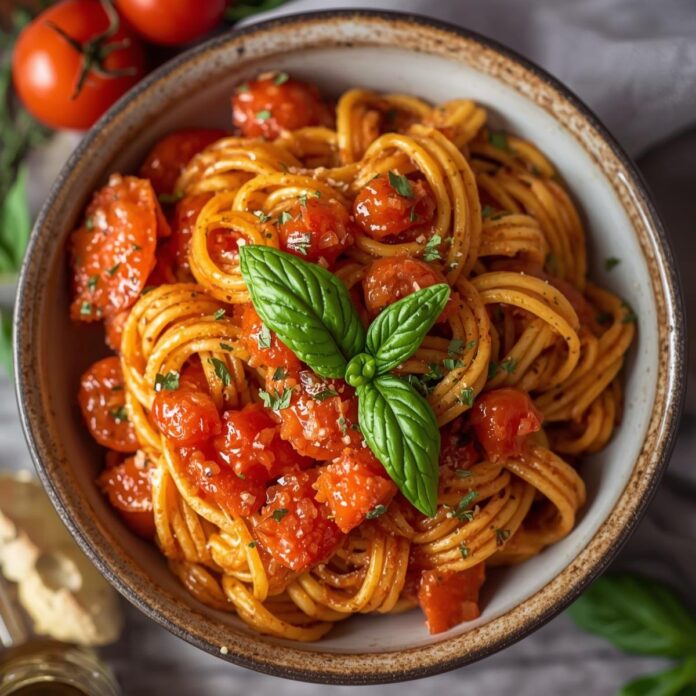Teriyaki Glazed Brussels Sprouts bring together two culinary traditions that, at first glance, seem worlds apart: the earthy, nutty depth of roasted Brussels sprouts and the glossy, savory-sweet richness of classic teriyaki sauce. The result is a dish that is both familiar and surprising, where each element enhances the other. Brussels sprouts, often misunderstood or underappreciated, take exceptionally well to high-heat cooking, developing crisp edges and caramelized surfaces that contrast beautifully with their tender interiors. When these roasted sprouts are coated in a well-balanced teriyaki glaze, the dish gains an entirely new dimension—one that is bold, aromatic, and layered with sweet, salty, and umami notes.

The foundation of this recipe rests on the science of roasting and reduction. Brussels sprouts contain natural sugars that intensify when exposed to high heat; they char slightly at the edges, transforming bitterness into complexity. Teriyaki sauce, traditionally made from soy sauce, sugar or mirin, and aromatics, becomes thicker and more concentrated when simmered. When these two techniques converge, the vegetables absorb the glaze’s sheen and flavor, creating bite-sized pieces that are as visually appealing as they are satisfying to eat. The contrast of crispness and stickiness—roasted exterior meeting lacquered coating—gives the dish its distinctive character.
What makes Teriyaki Glazed Brussels Sprouts especially compelling is its versatility. They can serve as a side dish, an appetizer, or even a centerpiece in a plant-forward or vegetarian meal. The glaze can be adjusted to lean sweeter, saltier, brighter, or spicier, depending on the cook’s preference. Additions such as toasted sesame seeds, thinly sliced scallions, or a touch of chili sauce can shift the personality of the dish without requiring complicated techniques. It is equally comfortable on a holiday table, where rich glazes complement hearty entrées, as it is on a weeknight menu, offering a quick yet elevated way to enjoy vegetables.
Many cooks who believe they dislike Brussels sprouts often experience a shift in perspective once they try them roasted, and this recipe accelerates that transformation even further. Instead of relying on steaming or boiling—methods that can mute flavor and texture—roasting highlights the vegetable’s strengths. The teriyaki glaze supplies the savoriness and sweetness that Brussels sprouts naturally welcome, making the dish approachable even for those who have previously avoided this ingredient. It stands as an example of how thoughtful pairing can change the way an ingredient is perceived.
This introduction frames what will follow: a detailed exploration of roasting techniques, the construction of a balanced teriyaki glaze, the interplay of texture and flavor, and ways to customize the recipe for different occasions and palates. We will also discuss the cultural backgrounds that influence each component, the chemistry behind caramelization and reduction, and the practical considerations that ensure consistent results. The goal is not merely to present a recipe, but to illuminate the craft behind it, empowering you to make Teriyaki Glazed Brussels Sprouts that are memorable, adaptable, and deeply satisfying every time.
Detailed Instructions
1. Selecting and Preparing the Brussels Sprouts
Choosing Quality Sprouts
Start with fresh, firm Brussels sprouts. Look for small to medium-sized heads with tightly packed leaves and vibrant green color. Avoid sprouts with yellowing leaves or soft spots, as these indicate age and can affect both flavor and texture. Smaller sprouts tend to roast more evenly and develop a better balance of crisp exterior and tender interior. Medium-sized sprouts work well if halved or quartered to ensure uniform cooking.
Cleaning and Trimming
Rinse the sprouts thoroughly under cold running water to remove any dirt or grit trapped in the leaves. Pat them dry completely with a clean kitchen towel or paper towels. Moisture on the leaves can steam the sprouts rather than roast them, preventing proper caramelization. Trim the stem ends just enough to remove the tough base, but avoid cutting too deeply, which can cause leaves to fall off during cooking. Remove any yellowed or damaged outer leaves.
Cutting for Even Cooking
If the sprouts are larger than a golf ball, cut them in half vertically through the stem. This exposes the inner layers to heat and allows for better browning. For extra-large sprouts, quarter them lengthwise. Uniform pieces ensure that all sprouts finish cooking at the same time and have similar texture.
2. Pre-Roasting Preparation
Seasoning
Place the trimmed Brussels sprouts in a large mixing bowl. Drizzle lightly with olive oil to coat evenly. This helps the vegetables brown and prevents them from drying out. Season with salt and freshly cracked black pepper. Optionally, add a pinch of smoked paprika or garlic powder to enhance depth, but keep additional seasonings subtle so the teriyaki glaze remains the star flavor.
Optional Pre-Tossing Flavor Boost
Some cooks like to toss the sprouts with a teaspoon of sesame oil before roasting. This adds a toasty, nutty aroma that complements the glaze and intensifies the overall flavor profile. For those seeking a stronger umami punch, a light sprinkle of soy sauce can also be added at this stage, but reduce the final glaze slightly to prevent oversalting.
3. Roasting the Brussels Sprouts
Oven Preparation
Preheat the oven to 400–425°F. Use a rimmed baking sheet for best results. Line it with parchment paper or a silicone baking mat for easy cleanup. Avoid overcrowding the sprouts; leave a little space between each piece to allow hot air to circulate, which promotes crisping and even caramelization.
Arranging the Sprouts
Place the cut Brussels sprouts on the prepared baking sheet with the cut side facing down. This direct contact with the pan surface ensures maximum browning and the development of deep, nutty flavors. Spread them out into a single layer; overlapping pieces will steam instead of roast.
Roasting Time
Roast for 20–30 minutes, depending on size. Begin checking around the 18-minute mark. The sprouts are done when:
-
The edges are deeply golden brown and slightly crisp
-
The outer leaves have a caramelized sheen
-
A knife pierces the stem easily
For extra crispiness, flip the sprouts halfway through cooking. Leaving them cut-side down for the first half intensifies browning on the base.
4. Preparing the Teriyaki Glaze
Ingredients
A classic teriyaki glaze combines soy sauce, sweetener (sugar, honey, or maple syrup), mirin or rice vinegar, and aromatics such as garlic, ginger, and optional sesame oil. High-quality soy sauce and fresh garlic/ginger dramatically improve the sauce’s depth.
Combining Ingredients
In a small saucepan over medium heat, combine:
-
½ cup soy sauce
-
¼ cup sweetener (brown sugar, honey, or maple syrup)
-
2–3 cloves garlic, minced
-
1 teaspoon freshly grated ginger
-
1 teaspoon rice vinegar or mirin
Whisk the mixture to dissolve sugar and prevent sticking. Heat until small bubbles appear around the edges.
Thickening the Glaze
Simmer gently for 5–7 minutes. Stir occasionally to prevent burning. The glaze should reduce slightly, becoming glossy and viscous enough to coat the back of a spoon. Optionally, whisk in 1 teaspoon cornstarch slurry (1 tsp cornstarch + 1 tbsp water) to achieve a thicker glaze. Taste and adjust balance: more sweetness, acidity, or saltiness as desired.
5. Glazing the Roasted Brussels Sprouts
Initial Toss
Remove the roasted Brussels sprouts from the oven. Transfer them to a large mixing bowl while still hot. Pour 2–3 tablespoons of the teriyaki glaze over the sprouts and toss gently to coat. The residual heat will help the glaze adhere and start to caramelize without overcooking.
Optional Second Oven Caramelization
For an intensified glaze, return the coated sprouts to the baking sheet and bake an additional 5–7 minutes at 400°F. Watch carefully: the sugar in the glaze can burn if left too long. The goal is a sticky, glossy coating with slightly darker edges for a contrast of textures.
6. Finishing Touches
Garnishing
Once roasted and glazed, garnish the Brussels sprouts with toasted sesame seeds for a subtle crunch and nutty aroma. Thinly sliced scallions or chives add freshness and a mild bite. For heat, sprinkle crushed red pepper flakes or a drizzle of chili oil.
Serving Suggestions
Teriyaki Glazed Brussels Sprouts can be served:
-
As a side dish with grilled or roasted meats
-
Over rice or quinoa for a vegetarian main
-
Tossed with noodles for a quick teriyaki pasta
-
Alongside tofu, tempeh, or seitan for plant-based meals
They are best served hot, straight from the oven, to enjoy the contrast of crisp edges and tender interiors.
Teriyaki Glazed Brussels Sprouts
Teriyaki Glazed Brussels Sprouts bring together two culinary traditions that, at first glance, seem worlds apart: the earthy, nutty depth of roasted Brussels sprouts and the glossy, savory-sweet richness of classic teriyaki sauce. The result is a dish that is both familiar and surprising, where each element enhances the other. Brussels sprouts, often misunderstood or underappreciated, take exceptionally well to high-heat cooking, developing crisp edges and caramelized surfaces that contrast beautifully with their tender interiors. When these roasted sprouts are coated in a well-balanced teriyaki glaze, the dish gains an entirely new dimension—one that is bold, aromatic, and layered with sweet, salty, and umami notes.
Ingredients
- For the Brussels Sprouts:
- 1½ lbs Brussels sprouts, trimmed and halved
- 2 tbsp olive oil (or sesame oil for extra flavor)
- ½ tsp salt
- ¼ tsp black pepper
- Teriyaki Glaze:
- ¼ cup soy sauce (low-sodium recommended)
- 2 tbsp honey or brown sugar
- 1 tbsp rice vinegar
- 1 tbsp sesame oil
- 1 clove garlic, minced
- 1 tsp grated fresh ginger (or ¼ tsp ground ginger)
- 1–2 tsp sriracha (optional for heat)
- 1 tsp cornstarch + 2 tsp water (slurry)
- Optional Toppings:
- Toasted sesame seeds
- Sliced green onions
- Red pepper flakes
- Crushed peanuts or cashews
Instructions
1. Roast the Brussels Sprouts
- Preheat oven to 425°F (220°C).
- Toss halved Brussels sprouts with olive oil, salt, and pepper.
- Spread cut-side down on a baking sheet.
- Roast 18–22 minutes, or until the edges are golden and crispy.
2. Make the Teriyaki Glaze
- In a small saucepan, combine soy sauce, honey/brown sugar, rice vinegar, sesame oil, garlic, ginger, and sriracha (if using).
- Bring to a simmer over medium heat.
- Stir in the cornstarch slurry and cook until thickened, 1–2 minutes.
- Remove from heat.
3. Glaze the Brussels Sprouts
- Transfer roasted Brussels sprouts to a bowl or skillet.
- Drizzle with the teriyaki glaze and toss to coat evenly.
- Return to the oven for 3–5 minutes if you want the glaze to caramelize slightly.
4. Serve
- Garnish with sesame seeds, green onions, or nuts.
- Serve immediately as a side dish or over rice for a simple bowl.
Notes
- Air fryer option: Cook at 380°F (193°C) for 12–15 minutes, shaking halfway.
- Make it vegan: Use maple syrup or agave instead of honey.
- Make it gluten-free: Use tamari or coconut aminos in place of soy sauce (reduce sugar if using coconut aminos).
- Adding a splash of orange juice to the glaze gives a bright citrus twist.
- Pairs well with salmon, chicken teriyaki, tofu, or rice bowls.



